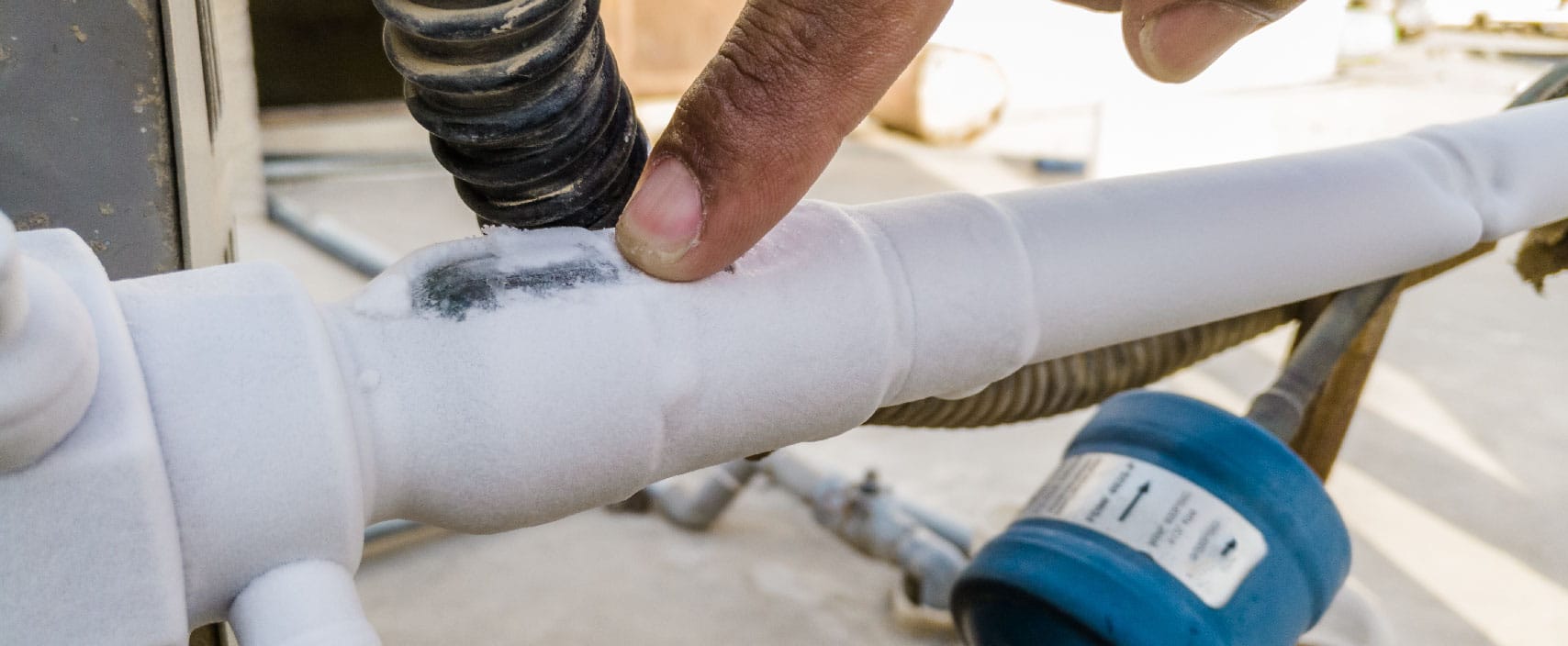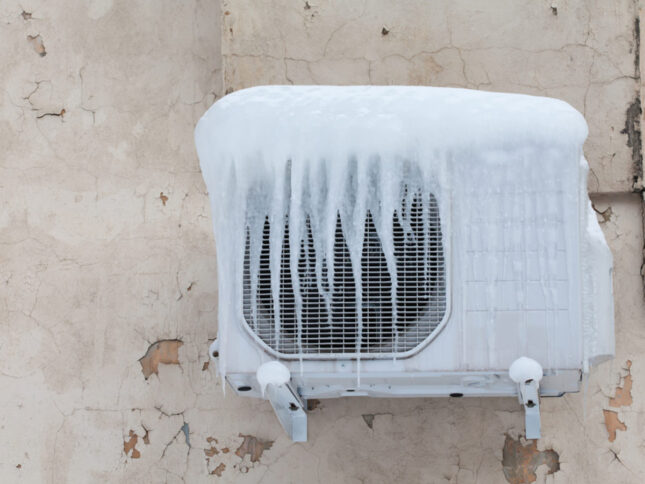Steps to Follow When Your AC Pipe is Frozen: Detailed Manual
Steps to Follow When Your AC Pipe is Frozen: Detailed Manual
Blog Article
What are your opinions on What Do I Do If My AC Pipe Is Frozen?

Introduction
Discovering that your AC pipeline is iced up can be concerning, particularly throughout hot summertime when you rely upon your air conditioning unit the most. Understanding what to do in such a scenario is vital to avoid more damage to your cooling system and ensure your convenience inside.
Recognizing the Causes
Several variables can contribute to the cold of an air conditioning pipeline. Recognizing these causes can aid you deal with the issue successfully.
Absence of Airflow
One common root cause of an icy air conditioner pipeline is inadequate air movement. When the air flow over the evaporator coil is limited, it can trigger the coil to go down below freezing temperature, resulting in ice formation on the pipe.
Low Refrigerant Levels
Inadequate cooling agent levels in your air conditioning system can additionally lead to an icy pipeline. Reduced cooling agent degrees can trigger the stress in the system to go down, causing the freezing of moisture on the evaporator coil.
Winter Conditions
In chillier environments, freezing temperature levels outside can contribute to the cold of AC pipelines. If your air conditioner device is not appropriately protected or if there are leaks in the ductwork, chilly air can penetrate the system, creating the pipeline to ice up.
Dirty Air Filters
Unclean or clogged air filters can restrict air movement in your air conditioner system, bring about numerous issues, including a frozen pipeline. It's vital to replace or cleanse your air filterings system consistently to ensure correct air movement and avoid ice accumulation.
Indicators of a Frozen Air Conditioner Pipe
Acknowledging the indications of a frozen air conditioning pipe is critical for timely activity.
Minimized Airflow
If you discover a significant reduction in air movement from your vents, it can suggest an icy pipe.
Ice Buildup on the Pipe
Noticeable ice build-up on the refrigerant line or the evaporator coil is a clear sign of a frozen air conditioner pipeline.
Strange Sounds from the Unit
Unusual sounds, such as hissing or bubbling, originating from your air conditioning device can signify that there's ice present on the pipe.
Immediate Actions to Take
When faced with an icy air conditioning pipeline, it's necessary to act promptly to prevent more damage to your air conditioning system.
Turning off the a/c
The first step is to turn off your ac unit to stop the system from running and exacerbating the issue.
Looking for Blockages
Evaluate the location around the interior system for any kind of blockages that might be obstructing air movement, such as furniture or curtains.
Defrosting the Pipe
You can make use of gentle methods like positioning towels taken in cozy water around the icy pipe to help thaw it gradually.
Safety nets
Taking preventive measures can help avoid future occurrences of an icy air conditioner pipe.
Normal Maintenance Checks
Set up regular maintenance talk to a specialist HVAC professional to make sure that your air conditioning system is running successfully.
Altering Air Filters
Routinely replace or cleanse your air filters to stop airflow limitations and keep ideal efficiency.
Insulating Exposed Pipes
If your AC pipes are exposed to cold temperatures, consider insulating them to prevent freezing during winter season.
Looking For Professional Help
If DIY methods fall short to settle the problem or if you're unsure regarding exactly how to proceed, it's ideal to look for help from a qualified HVAC service technician.
When DIY Methods Fail
If your attempts to thaw the pipeline or address various other issues are not successful, it's time to call a specialist.
Significance of Hiring a Professional HVAC Technician
A qualified HVAC service technician has the know-how and tools needed to diagnose and repair problems with your AC system safely and properly.
Conclusion
Handling a frozen a/c pipeline can be an aggravating experience, but recognizing exactly how to respond can assist reduce damages and bring back comfort to your home. By recognizing the reasons, identifying the indications, and taking punctual action, you can efficiently resolve the problem and protect against future events.
Frozen AC Line: Why It Happens & What To Do About It
A frozen AC line can be a rather peculiar sight in a place like Phoenix, Arizona where nothing ever freezes. In this post, we’ll discuss what makes an air conditioner line frozen – and what you can do about it.
Dirty Air Filters
Did you know that you should be cleaning or replacing your air filters on a monthly basis? Failing to do this can result in airflow issues that, in turn, cause your evaporator coils and lines to freeze over. You’ll notice a buildup of ice on both components, although the buildup on your pipes will, of course, be more evident unless you open your air condition up to reveal the coils.
What To Do About It
Give your air filter a good cleaning if it’s reusable. If not, replace the filter outright. Next, switch your air conditioner’s fan setting on and leave it there for 2-3 hours. This will draw warm air in, helping to thaw your evaporator coil. You can also check out this article for some tips on cleaning the coils themselves if you’d like to speed the process up. Before you switch the unit back to its normal state, make sure the supply vents are completely unobstructed and free of dust or other debris.
If you keep having this issue even after replacing your filters regularly, contact a local HVAC repair company and have them inspect your evaporator coil, ductwork, and any other components that may be at fault. If you live in the Phoenix, Arizona area, give American Home Water and Air a call.
Low Refrigerant Levels/Leakage
What To Do About It
Contrary to what air conditioner “recharge” companies often tell their clients about refrigerant, it should never need to be simply refilled. You see, refrigerant runs in what experts refer to as a “closed loop.” Refrigerant really shouldn’t be leaving that loop. If it is, you’ve got a leak.
Paying someone to come and pump more refrigerant into your system (aka “recharge” it) isn’t the solution. Doing that will simply kick the can down the road. Besides, refrigerant leaks can be harmful to the environment and people in your home.
Rather, you need to take care of the leak with the help of a technician. Check out this article for some more information about dealing with air conditioners that are leaking refrigerant. Before you contact a technician, switch your thermostat to the off position. Then, switch the fan setting on and let it run for 2-3 hours so the unit can thaw.
Improper Temperature Setting
Improper temperature settings can also cause a drop in your air conditioner’s pressure. What many people don’t realize is that air conditioners are actually designed to run when temperatures have fallen above roughly 60 degrees Fahrenheit. If you run the unit when it’s cold outside, you’ll run into many issues, including frozen components.

We were shown that article about Why Is Ice On My Outside Air Conditione through someone on our other web address. Sharing is caring. Helping people is fun. We value reading our article about Air Conditioner Frozen? How To Fix your Frozen AC Line.
Visit Our Site Report this page